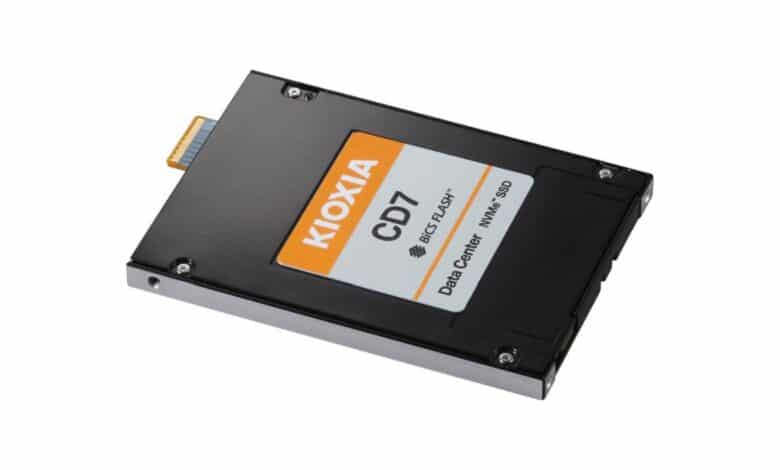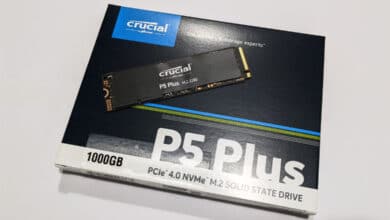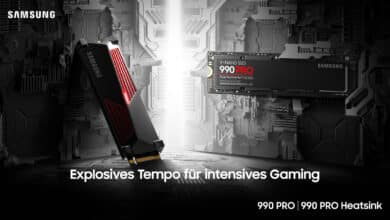
Thanks to the new Intel Alder Lake processors, PCI Express 5.0 is slowly but surely making its way into desktop systems, at least in theory. Intel Xeon and AMD will not follow until next year, but more and more manufacturers are introducing SSDs based on PCIe 5.0. So does Kioxia with the new CD7-E3.S in the new E3.S form factor.
Kioxia CD7-E3.S: PCIe-5.0 -SSD with PCIe-4.0 data throughput
Considered a larger flash NAND storage manufacturer, Kioxia introduced the new Kioxia CD7-E3.S, a PCIe 5.0 SSD that relies on the E3.2 form factor. It is offered in capacities of up to 7.68 TB. E3.S is a new SSD form factor aimed at enterprise & data center SSDs. In particular, air circulation and heat dissipation are optimized.
The CD7-E3.S series does use PCI Express 5.0, but only with two lanes. Thus, the transfer rate is 7.877 GB/s, at least in theory. This corresponds to the speed that is also possible with PCI-Express 4.0 with four lanes.
Kioxia states a data throughput of up to 6,450 MB/s for sequential reads and 1,050K IOPS for random reads. Thus, the connection of the Kioxia CD7-E3.S series via two PCIe 5.0 lanes apparently does not mark a limitation of the connection. The controller and NAND flash that are used are apparently not capable of delivering a higher data throughput.
Advantages despite only two lanes
However, the manufacturer notes that more drives can be attached to a host when only two lanes are used. After all, up to 15.754 GB/s throughput would be possible via four PCIe 5.0 lanes.
Nevertheless, the Kioxia CD7-E3.S series can already take advantage of some of the benefits of PCI Express 5.0 connectivity. These include the low latency of 75 μs when reading and 14 μs when writing data. This is 17, or 60%, less than Kioxia’s previous generation PCIe 4.0 SSDs.
The competition is not sleeping
Various other manufacturers are already working on PCIe 5.0 controllers that can connect more NAND flash in parallel via more memory channels. This means that significantly higher data transfer rates can be achieved.
The NAND itself will also become significantly faster. Currently, most NAND manufacturers achieve 1,600 MT/s. Samsung and Kioxia want to reach a speed of 2,000 MT/s in the near future, and even 2,400 MT/s is already being planned. At the same time, however, not only the speed of the interface is getting faster, but also the memory itself. PCIe 5.0 SSDs with data transfer rates of 10 GB/s and more are only a matter of time.
The enterprise SSDs of the Kioxia CD7-E3.S series are already being shipped to selected, existing OEM customers with immediate effect.



